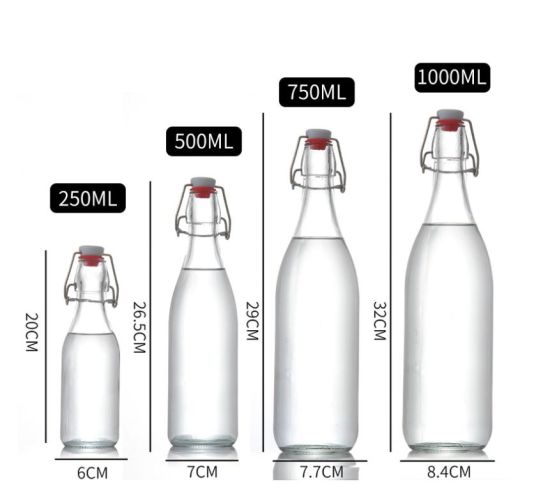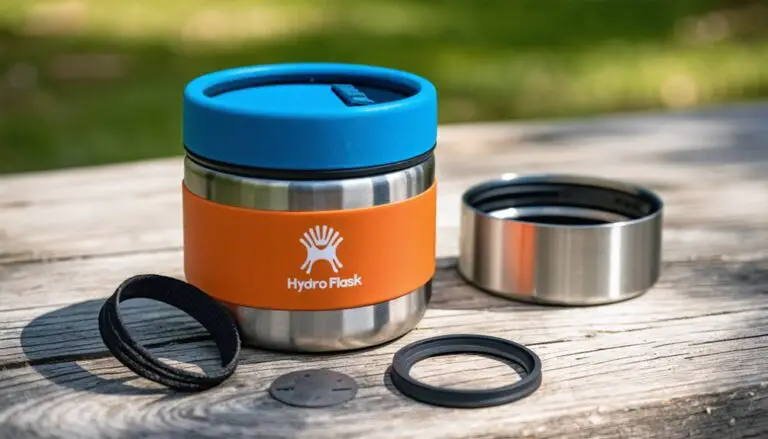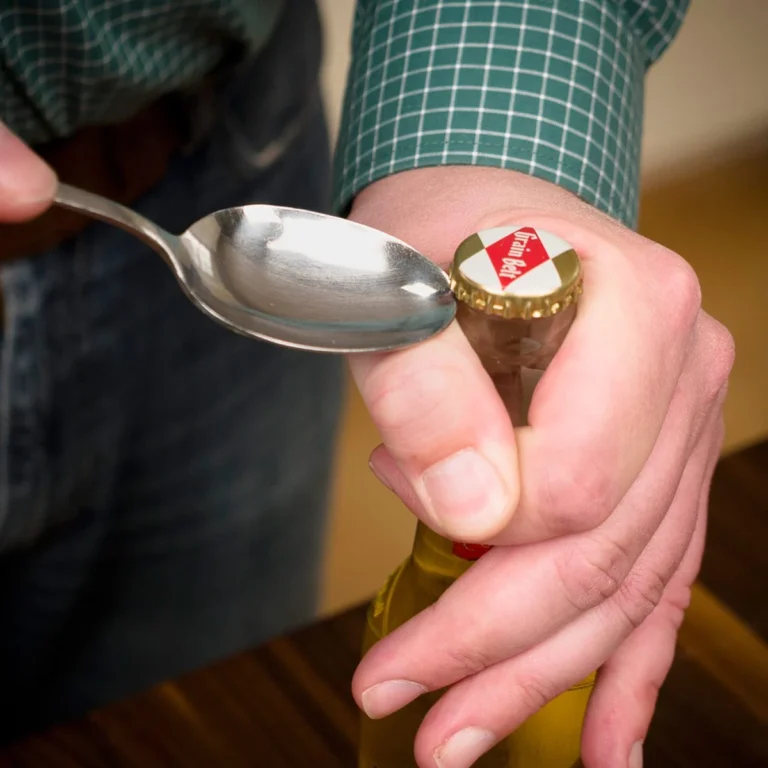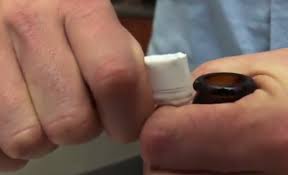Are you tired of constantly questioning how many ounces are in a 750ml bottle? Look no further! In this blog post, we will provide you with all the factual data you need to know the exact conversion from milliliters to fluid ounces. Say goodbye to confusion and hello to accuracy when it comes to measuring your favorite beverages. So, grab a pen and paper because we’re about to break it down for you.
I. Understanding the conversion between ounces and milliliters
Understanding the conversion between ounces and milliliters is essential for accurately measuring liquid quantities.
One fluid ounce is equal to approximately 29.5735 milliliters (ml). This conversion factor allows us to convert fluid ounces to milliliters and vice versa.
When we talk about a 750 ml bottle, we are referring to the capacity of the bottle. To determine how many ounces are in a 750 ml bottle, we can use the conversion factor. By dividing 750 ml by 29.5735 ml, we find that a 750 ml bottle is equivalent to approximately 25.36 fluid ounces.
Here’s a quick summary of the conversion:
| Conversion Factor |
| 1 fluid ounce (fl oz) = 29.5735 milliliters (ml) |
| 1 milliliter (ml) = 0.0338 fluid ounces (fl oz) |
Here’s a table comparing the conversion between ml and ounces for common 250 ml / 500 ml / 750 ml / 1000ml (1 Liter) bottle sizes:
| Bottle Size | Milliliters (ml) | Fluid Ounces (fl oz) |
| 750 ml | 750 | 25.36 |
| 500 ml | 500 | 16.91 |
| 250 ml | 250 | 8.45 |
| 1000 ml | 1000 | 33.81 |
Understanding the conversion between ounces and milliliters allows us to accurately measure and compare liquid quantities, ensuring we use the appropriate amount in recipes, medications, and other applications.
II. The Standard Bottle Size
Exploring the common bottle size of 750 ml
The common bottle size of 750 ml is widely used in the beverage industry, particularly for wine and spirits. It is equivalent to approximately 25.36 fluid ounces. This size is popular because it provides a good balance between serving multiple people and maintaining affordability.
Here are some key points about the common 750 ml bottle size:
- Wine: 750 ml is the standard size for wine bottles. It typically contains around 25 ounces of liquid, which is equivalent to about 5 standard 5-ounce servings.
- Spirits: Many liquor bottles, such as vodka, whiskey, and gin, also come in the 750 ml size. This size is favored for its convenience and versatility.
- Cocktails: When making cocktails with a 750 ml bottle, you can easily calculate the number of servings by dividing the total ounces by the desired serving size. For example, if you want to serve 2-ounce cocktails, you can make approximately 12 servings from a 750 ml bottle.
- Cost: The 750 ml size is often priced competitively, making it an attractive option for both consumers and businesses. It strikes a balance between providing a sufficient quantity of product without being too expensive.
Overall, the 750 ml bottle size is a popular choice in the beverage industry due to its versatility, convenience, and cost-effectiveness. Whether for wine, spirits, or cocktails, it provides a practical solution for serving and enjoyment.
III. Fluid Ounces to Milliliters Conversion
The mathematical formula for converting fluid ounces to milliliters
To convert fluid ounces to milliliters, you can use the following mathematical formula:
1 fluid ounce = 29.5735 milliliters
This conversion factor is based on the international standard for fluid ounces, which is 1/128th of a U.S. gallon. The formula allows for precise conversion between the two units of measurement.
For example, to calculate the number of milliliters in a 750 ml bottle, you can multiply 750 by the conversion factor:
750 ml * 29.5735 = 22,180.125 ml
Therefore, a 750 ml bottle is equivalent to approximately 22,180.125 milliliters.
It’s important to note that this conversion factor is specific to fluid ounces and milliliters and may vary for other units of measurement. When dealing with different units, it’s always a good practice to consult a reliable conversion table or use online resources and apps for accurate conversions.
IV. How Many Ounces in a 750 ml Bottle?
Determining the exact number of ounces in a 750 ml bottle
To determine the exact number of ounces in a 750 ml bottle, we need to understand the conversion between milliliters (ml) and ounces.
There are approximately 29.57 ml in one fluid ounce. So, to convert ml to ounces, we can divide the number of milliliters by 29.57.
In the case of a 750 ml bottle, we can calculate the number of ounces by dividing 750 by 29.57.
750 ml 29.57 ml/oz = 25.36 ounces
Therefore, a 750 ml bottle is approximately equivalent to 25.36 fluid ounces.
It’s important to note that this is an approximate conversion, as ml and ounces are not exact equivalents. However, this conversion is widely used for practical purposes.
Here’s a table comparing the conversion between ml and ounces for common bottle sizes:
| Bottle Size | Milliliters (ml) | Fluid Ounces (fl oz) |
| 750 ml | 750 | 25.36 |
| 500 ml | 500 | 16.91 |
| 250 ml | 250 | 8.45 |
| 1000 ml | 1000 | 33.81 |
Please note that bottle sizes may vary, and these are just examples of common sizes. It’s always best to check the label or packaging for the precise volume of a specific bottle.
V. Comparisons to Other Bottle Sizes
Highlighting the differences between 750 ml and other common bottle sizes
When it comes to bottle sizes, the 750 ml bottle stands out as a popular choice for various beverages. However, it’s important to understand the differences between this size and other common bottle sizes to make informed decisions:
- 375 ml: This half-size bottle is commonly used for half bottles of wine or spirits. It contains approximately 12.7 fluid ounces.
- 1 liter: This larger bottle size is often used for wine, spirits, or non-alcoholic beverages. It contains approximately 33.8 fluid ounces.
- 1.5 liters: Also known as a magnum, this size is commonly used for wine or sparkling wine. It contains approximately 50.7 fluid ounces.
- 2 liters: This size is commonly used for carbonated soft drinks. It contains approximately 67.6 fluid ounces.
- Produce Bottles: These are typically small, individual serving-sized bottles commonly used for beverages such as juices or water. They can vary in size, typically ranging from 8 ounces to 16 ounces.
It’s important to note that the exact ounce measurement may vary slightly depending on the specific product and its packaging. It’s always a good idea to check the label for the precise volume.
Here’s a table summarizing the differences between the 750 ml bottle and other common bottle sizes:
| Bottle Size | Fluid Ounce Conversion |
| 375 ml | Approximately 12.7 fl oz |
| 1 liter | Approximately 33.8 fl oz |
| 1.5 liters | Approximately 50.7 fl oz |
| 2 liters | Approximately 67.6 fl oz |
Understanding the differences between bottle sizes can help you choose the appropriate amount of liquid for your needs, whether you’re hosting a gathering or simply enjoying a drink at home.
VI. Common Uses for 750 ml Bottles
Exploring the typical applications for 750 ml bottles
750 ml bottles are commonly used in various industries and applications due to their versatility and practical size. Here are some typical applications for 750 ml bottles:
- Beverage Industry: 750 ml bottles are often used for wines, spirits, and other alcoholic beverages. They are a popular choice for serving wine at restaurants and bars, as well as for retail sale in liquor stores.
- Cosmetics and Personal Care: Many beauty and personal care products, such as shampoos, conditioners, lotions, and body washes, are packaged in 750 ml bottles. These larger sizes are often preferred for professional salon use or for customers who use these products frequently.
- Cleaning and Household Products: Household cleaners, detergents, and other cleaning products are commonly packaged in 750 ml bottles. These larger sizes are convenient for refills and for customers who prefer to buy in bulk.
- Food and Condiments: Certain food products like sauces, dressings, and oils are packaged in 750 ml bottles. These bottles are suitable for both retail sale and for use in restaurants and foodservice establishments.
- Medical and Healthcare: Some medical and healthcare products, such as liquid medications or home healthcare solutions, are packaged in 750 ml bottles. These bottles provide an appropriate size for long-term use or for products that need to be administered in larger quantities.
It’s important to note that the application of 750 ml bottles may vary across different industries and regions, but their practical size and versatility make them a popular choice for various products.
VII. Different Industries and 750 ml Bottles
Examining specific sectors that commonly use 750 ml bottles
The 750 ml bottle is commonly used in various sectors, including:
- Wine and Spirits: The 750 ml bottle is the standard size for wine bottles and is often used for both red and white wines. It is also commonly used for spirits such as whiskey, vodka, and tequila.
- Beverage Industry: Many non-alcoholic beverages, including juices, sodas, and flavored waters, are packaged in 750 ml bottles. These bottles are popular for their convenient size and are often used for both individual consumption and sharing.
- Personal Care and Cosmetics: Some personal care products, such as shampoos, conditioners, body lotions, and facial cleansers, are packaged in 750 ml bottles. These larger bottles are often chosen for products that are used frequently or by multiple people in a household.
- Household Cleaning Products: Cleaning solutions, laundry detergents, and dish soaps are also commonly packaged in 750 ml bottles. These larger sizes are preferred for products that are used regularly and need to last longer.
- Food and Condiments: Some food products, such as cooking oils, vinegars, and sauces, are packaged in 750 ml bottles. These larger bottles are often chosen for products that are used frequently in cooking or for bulk purchases.
Overall, the 750 ml bottle size is versatile and widely used in various sectors due to its convenient size, capacity, and familiarity to consumers.
VIII. Fluid Ounces and Milliliters Conversion Tools
Online resources and apps for quick conversion
When it comes to quickly converting ounces to milliliters, there are several online resources and mobile apps available that can help simplify the process. These tools can be especially handy when you need to make conversions on the go or when dealing with multiple measurements at once. Some popular online resources and apps for quick conversion include:
- UnitConverters.net: This website offers a simple and user-friendly interface for converting ounces to milliliters. Just enter the amount in ounces, and the site will instantly provide the converted value in milliliters.
- Metric-Conversions.org: This online converter allows you to convert not only ounces to milliliters but also various other units of volume. It provides a straightforward conversion tool that is easy to use.
- Conversion Apps: There are numerous conversion apps available for both Android and iOS devices. These apps typically offer a wide range of unit conversions, including ounces to milliliters. Some popular ones include “Unit Converter” and “Converter+.”
Using these online resources or mobile apps can save you time and effort by providing quick and accurate conversions from ounces to milliliters.
IX.
Summary of the conversion and practical understanding of a 750 ml bottle’s ounce measurement
To summarize the conversion and practical understanding of a 750 ml bottle’s ounce measurement, it is important to note that 1 fluid ounce (oz) is equal to approximately 29.5735 milliliters (ml). Therefore, a 750 ml bottle is equivalent to approximately 25.36 fluid ounces.
Understanding this conversion can be helpful for various purposes, such as measuring liquid volumes, following recipes, or understanding product packaging. It is worth noting that the 750 ml bottle size is commonly used for wine and spirits, providing a practical volume for individual servings or sharing among a small group.
Here are some key takeaways:
- A 750 ml bottle is equivalent to approximately 25.36 fluid ounces.
- This bottle size is commonly used in the wine and spirits industry.
- It provides a convenient volume for individual servings or sharing.
- Remember that the conversion between ounces and milliliters is not exact, but the given estimation is widely used and accepted.
By understanding this conversion, you can easily navigate between measurements and accurately gauge the volume of a 750 ml bottle in fluid ounces.
X. FAQs
Common questions and answers related to fluid ounces and milliliters conversion
Here are some common questions and answers related to the conversion between fluid ounces and milliliters:
- What is the conversion factor between fluid ounces and milliliters?
The conversion factor is 1 fluid ounce = 29.5735 milliliters. - How many fluid ounces are in a 750 ml bottle?
A 750 ml bottle is equivalent to approximately 25.36 fluid ounces. - Can I convert fluid ounces to milliliters using a simple formula?Yes, the formula to convert fluid ounces to milliliters is: Milliliters = Fluid ounces x 29.5735.
- Are there any other common bottle sizes besides 750 ml?Yes, there are various standard bottle sizes, such as 375 ml (half bottle), 1 liter (1,000 ml), and 1.5 liters (1,500 ml).
- What are the typical applications for 750 ml bottles?750 ml bottles are commonly used for wine, spirits, and certain types of liquor.
It’s important to note that these conversions are approximate and may vary slightly depending on the specific bottle and its contents. For more accurate measurements, it’s recommended to use a measuring cup or a digital scale.




